Do you want to rank higher on Google and drive more organic traffic? Backlinks remain one of the most important Google ranking factors. But it’s backlink quality, not just quantity, that matters most to search engines.
In this post, we’ll explore exactly how to evaluate the quality of backlinks pointing to your site. We’ll cover key factors like relevance, optimization best practices, and tools to monitor your backlink profile.
With the right strategy, you can build high-value backlinks that boost domain authority, improve page rankings, and ultimately generate more qualified visitors. Let’s dive in to learn how to assess backlink quality and prioritize the links that deliver results.
What is Backlink Quality?
Backlink quality is a set of SEO standards followed by most SEO professionals to determine the quality of a backlink.
Backlinks are incoming links from other websites pointing to pages on your site. They are a crucial Google ranking factor and other search engines, as high-quality backlinks indicate authority and trust.

But not all backlinks have the same impact – quality backlinks are the ones that will significantly move your ranking needle and get you closer to ranking for the top position.
High-quality backlinks come from reputable, authoritative websites relevant to your niche. They use accurate anchor text and are placed appropriately within the content. Low-quality backlinks include spammy links from irrelevant sites, excessive keyword repetition, and unnatural link placement.
Why Backlink Quality Matters
There are many reasons why backlink quality is so important and why link building companies such as uSERP or LinkBuilder.io charge $10,000 for a few backlinks.

Yet many companies and SEO professionals (including me) prefer that rather than backlinks for $10-$50 from guys like these.

With that here are the key reasons why backlink quality is so important for SEO and rankings:
- It’s a top-ranking factor – Google has confirmed that backlinks are one of the most important signals used in their algorithm. But it’s specifically the quality, not just quantity, that they value. (John Mueller) (Video)
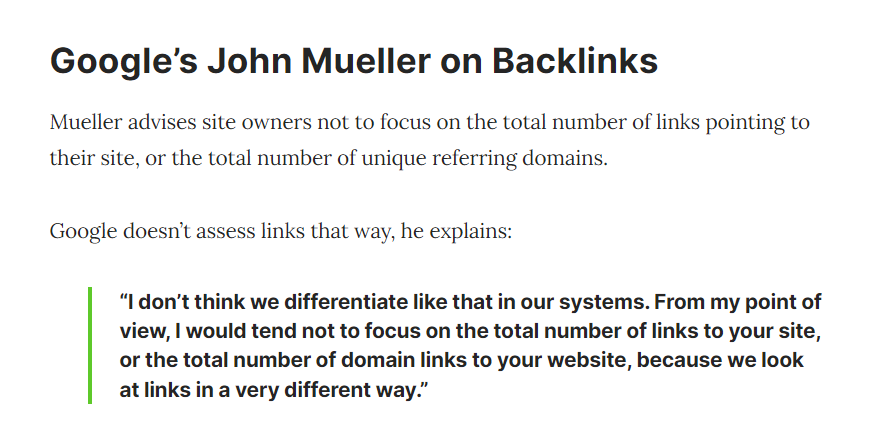
- Penguin, Fred & other algorithms target low-quality links – Some of the Google algorithms are designed to identify and demote sites with spammy, manipulative link building strategies. Too many low-quality links can get your site penalized. Additionally, search engines are good at automatically devaluating poor-quality backlinks.
- Quality backlinks are harder to earn – Anyone can easily buy links or build a large link network fast. However high-quality backlinks take time as they require unique, valuable content and relationships with websites.
- Long-term ranking stability – Low-quality links often rely on artificial manipulations that may work temporarily but aren’t sustainable long-term. Authoritative links earned or built stand the test of algorithmic changes.
- Quality backlinks help earn trust and authority – High-quality backlinks from reputable sites demonstrate expertise on a topic and authority in your niche. This trust passes on to your site as well AKA link juice or PageRank.
- Since AI Writing tools, and backlinks are becoming more important – Producing SEO content at scale was never easier since AI writing technologies significantly improved. This makes backlinks yet again more important than content.
Simply said, the better your overall backlink quality, the more search engines will reward your content with higher rankings, lower bounce rates, increased organic traffic, and more qualified leads.
That’s why regularly checking, monitoring, and tracking backlinks and improving backlink quality is a crucial ongoing SEO task.
8 Factors Determining Backlink Quality
So now, let’s discuss 8 of the most important factors that determine whether a backlink is a good or bad quality.

Factor #1: Organic Traffic & Location
The amount of organic search traffic a linking site receives is one of the strongest indicators of quality.
If a website receives organic search traffic from search engines like Google it means they trust the site to rank them, meaning that their algorithm finds the website trustworthy.
Therefore, it’s recommended to build backlinks on websites with a minimum organic traffic of 500, preferably 1,000 according to your SEO tool.
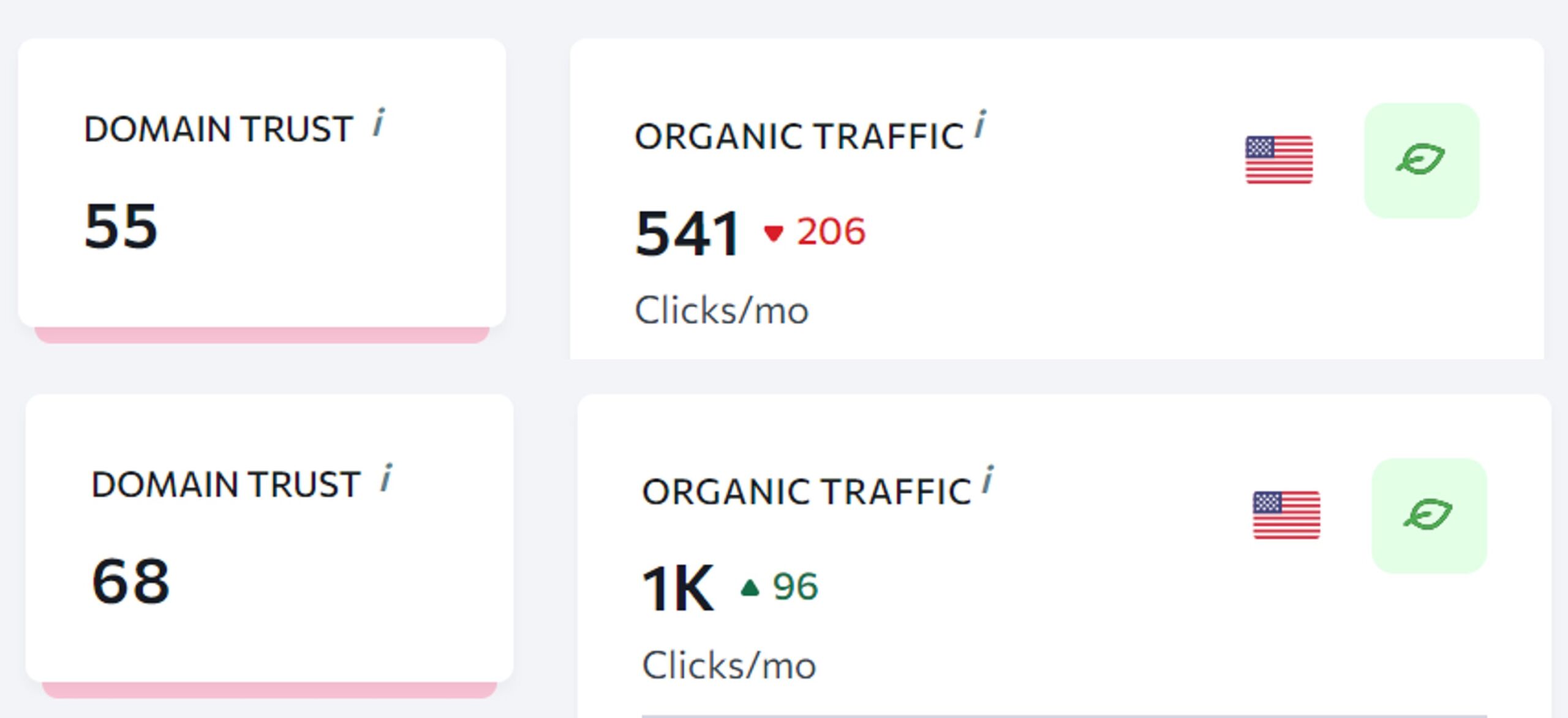
This is because SEO tools tend to underestimate the organic traffic for websites, especially for smaller sites.
Factor #2: Relevance of the Linking Site/Page
Niche relevance and contextual relevance are critical for evaluating backlink quality. The more closely related a linking site or page is to your target keywords and industry, the more value it provides.
There are four levels of relevancy that impact quality:
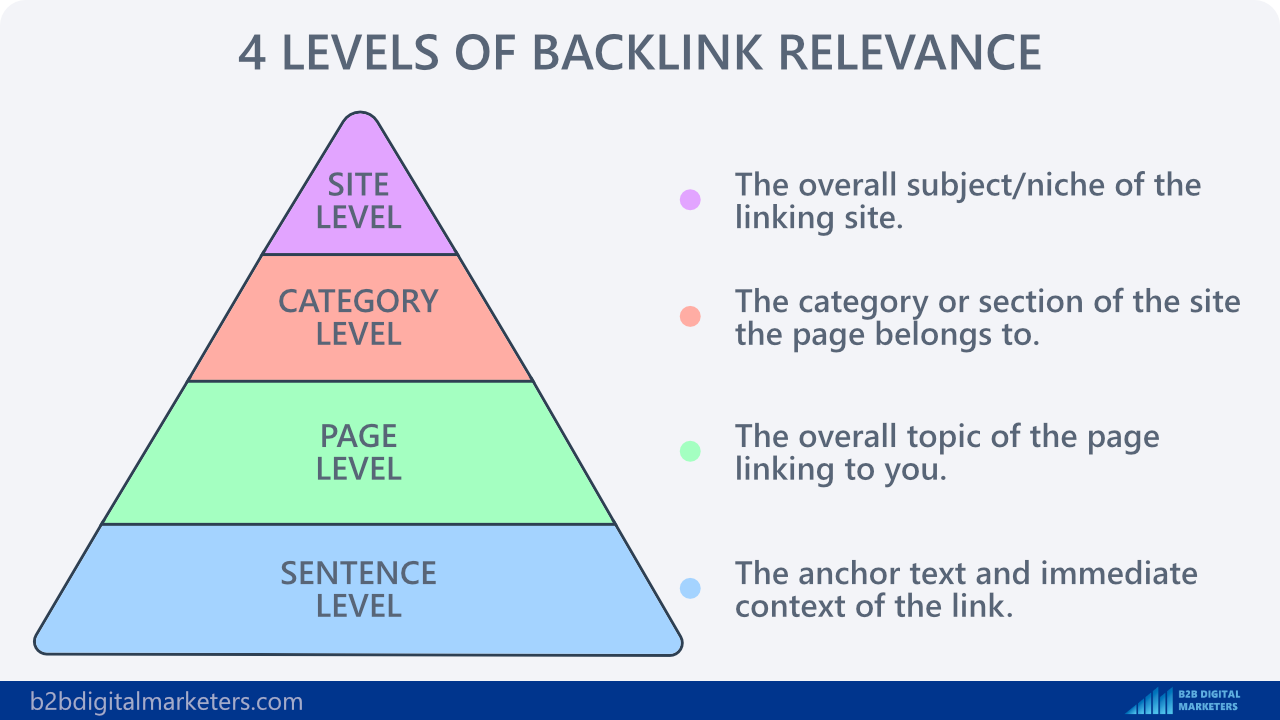
- Sentence level – The anchor text and immediate context of the link. This is the foundation of a backlink and the search engine algorithm really cares about this.
- Page level – The overall topic of the page linking to you. Another essential part of a backlink quality and it’s an important part of the algorithm.
- Category level – The category or section of the site the page belongs to. Less importance for both algorithms and humans.
- Site level – The overall subject of the linking site. This is more important to humans than search engine algorithms.
The first two levels – sentence and page – are the most important for algorithms assessing quality. But human visitors also value links from sites with relevant categories and overall site topics.
The categories should logically relate to each other and the broader site focus.
Niche Relevance
Ideally, backlinks should come from sites focused on the same or very similar topics as yours. If your site is about CRM technology, links from major technology blogs and Business Software sites would be considered very relevant. Links from gardening or cooking sites not focused on technology or CRM would have little relevance in passing authority.

Aim for sites that rank for keywords closely related to yours – these niche-relevant backlinks signal to search engines you are a trusted resource on those subjects.
Contextual Relevance
The specific page or piece of content linking to you also needs to make contextual sense. An unrelated out-of-context link placed only for SEO has little value.
Build only editorial links that occur naturally within relevant articles.
For example, if a site about the environment links to your gas vs. electric guide in an article about emissions of cars, the contextual relevance helps both sites.
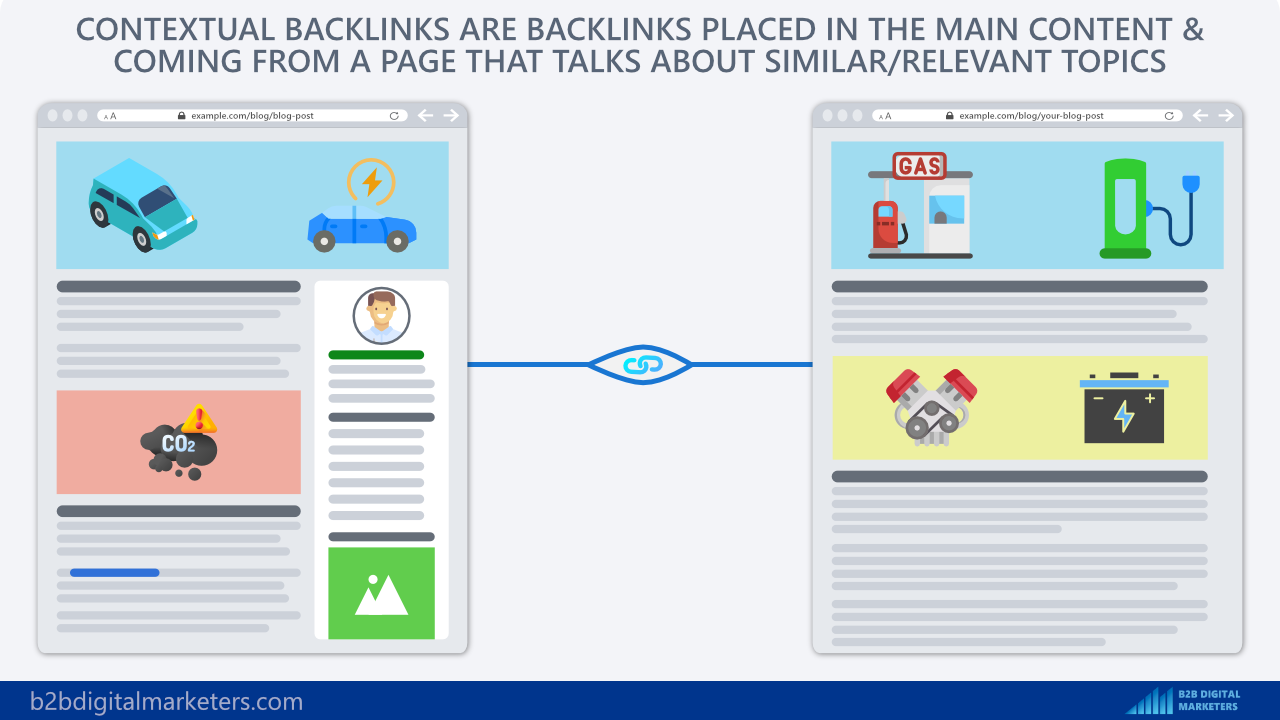
With that, the contextual relevance of backlinks is the most important part and you should never build non-contextual backlinks, While niche relevance is optimal, but also very hard to do.
Factor #3: Authority of the Linking Domain
The authority of the site giving you a backlink plays a significant role in determining quality. In general, links from high-authority websites will be much more beneficial for your SEO than low-authority sites.
For example, if you get a backlink from a website with a website authority of 90 it can significantly improve your ranking and organic traffic.

Whereas a backlink from the website with website authority of 30 the results won’t be as noticeable.
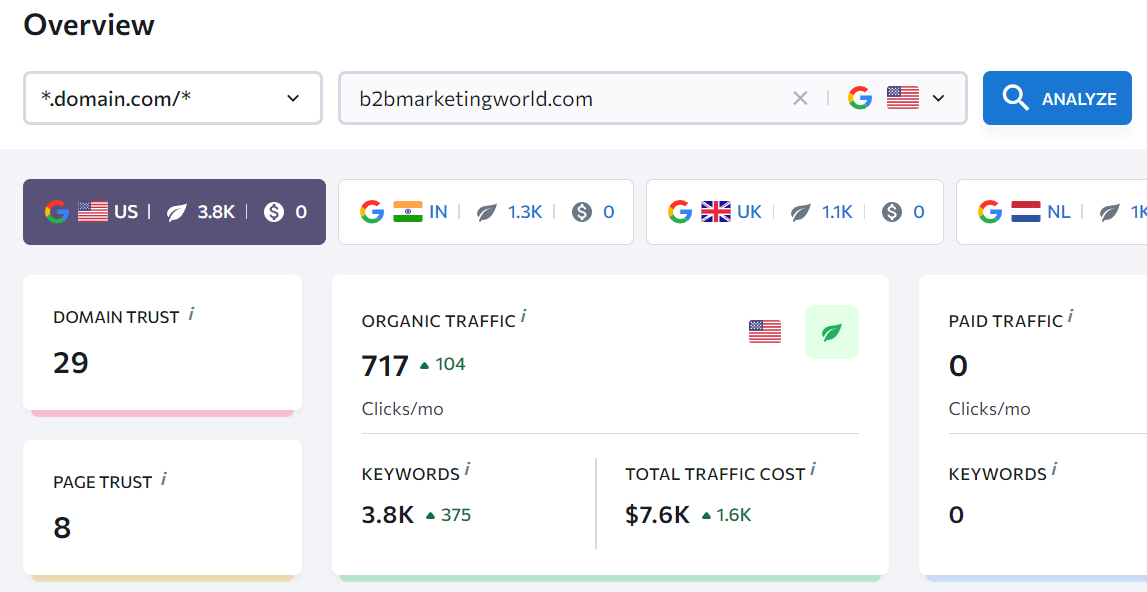
However, the more authoritative the website, the harder it is to get, and targeting only the most authoritative sites can damage your reputation, especially if you have smaller authority.
Thus, for the best results, I recommend you build backlinks on a website with +/-10 website authority relative to yours.
For example, if your website is 50, then you want to build backlinks on a website with 40-60 website authority.

Factor #4: Link Placement and Context
Where a link is placed on a page, and the surrounding context, affects its value. Backlinks embedded contextually within content are the most beneficial for SEO.
Contextual Link Placement
As discussed, ideally, links should occur naturally within paragraphs of text relating to your site and its content. Contextual links that are well integrated with the article’s themes look the most natural and provide optimal value.
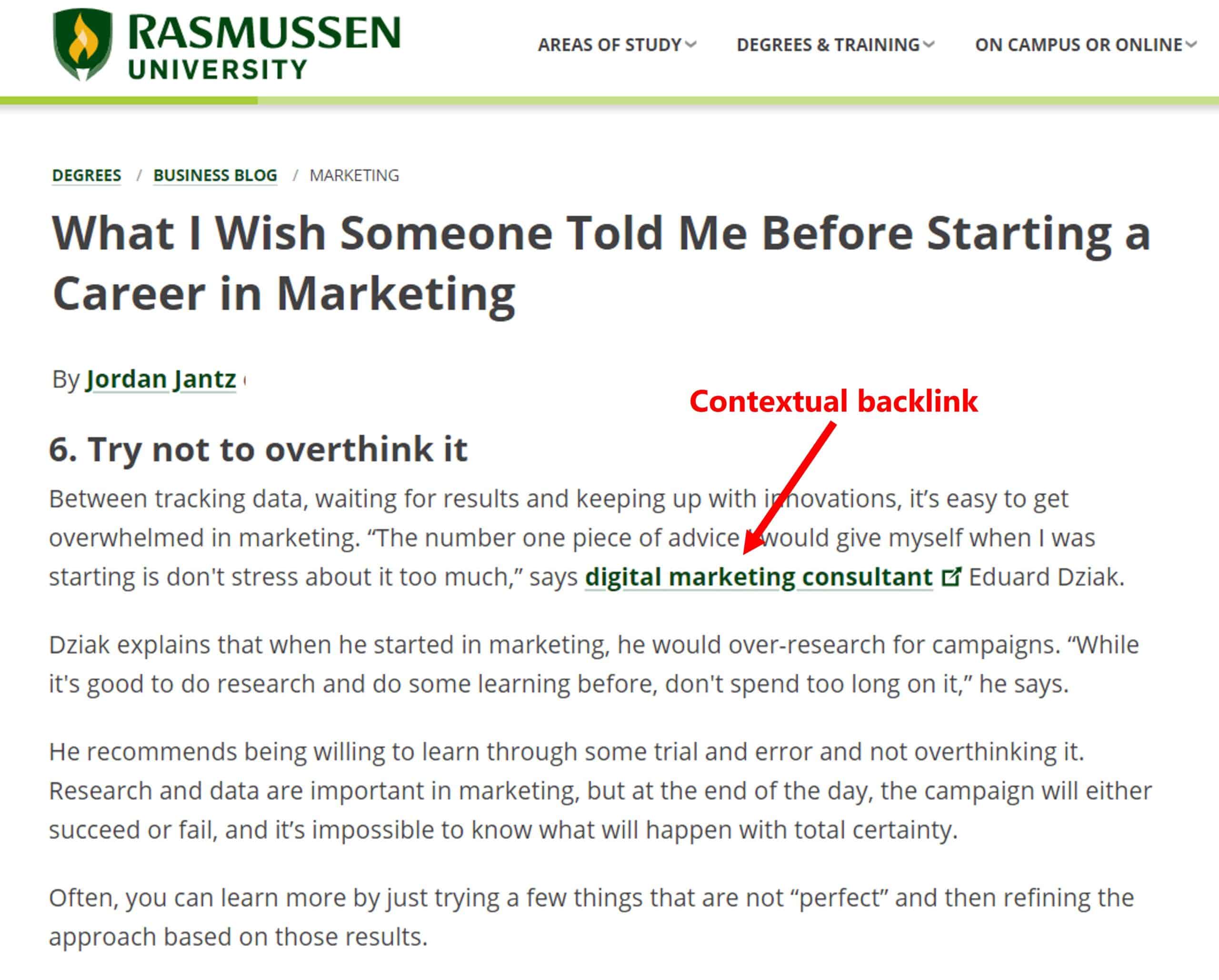
The backlink placement should make contextual sense.
Page Area Link Placement
In general, links placed in the main text/content areas of pages are best. Different areas of a page convey different values:

- Main content: Most valuable placement with the greatest context.
- Sidebars: Decent value, but can look somewhat promotional depending on context.
- Images:
- Footers: Least valuable. Often includes long lists of unrelated links.
Search engines value links embedded in content over those relegated to sidebars or footers with little context. Analyze where on the page your links appear to gauge quality.
Factor #5: DoFollow vs. No-Follow Links
Whether a link is dofollow or nofollow is another factor determining quality. Dofollow links pass link equity and help with rankings. Nofollow tells search engines not to use the link for ranking purposes.
Originally Google completely ignored nofollow links. Now they use them as hints but still don’t pass full equity.
Most quality editorial links are dofollow. Nofollow may be used for sponsored posts, affiliate links, or paid links to avoid penalties.

So, you should aim for dofollow links. Carefully consider nofollowed links, as they pass little SEO value.
I recommend regularly tracking your backlinks to ensure your dofollow links are not changed to nofollow.
For your highest quality backlink sources, request they remove nofollow settings if possible.
Factor #6: Anchor Text Optimization
The next important factor is the anchor text optimization as well as the ratio of anchor text you build.
Optimizing anchor text helps search engines understand relevancy, but overuse of keywords looks unnatural which can lead to Google penalties.
So here are some anchor text best practices that you should follow:
- Use a diverse mix of anchor text – Brand mentions, URLs, generic phrases like “click here”, and relevant long-tail key phrases.
- Avoid using the same anchor text twice for your web page. Always use different anchor text linking to your site.
- Follow the anchor text ratio for an optimal and natural looking anchor text profile.
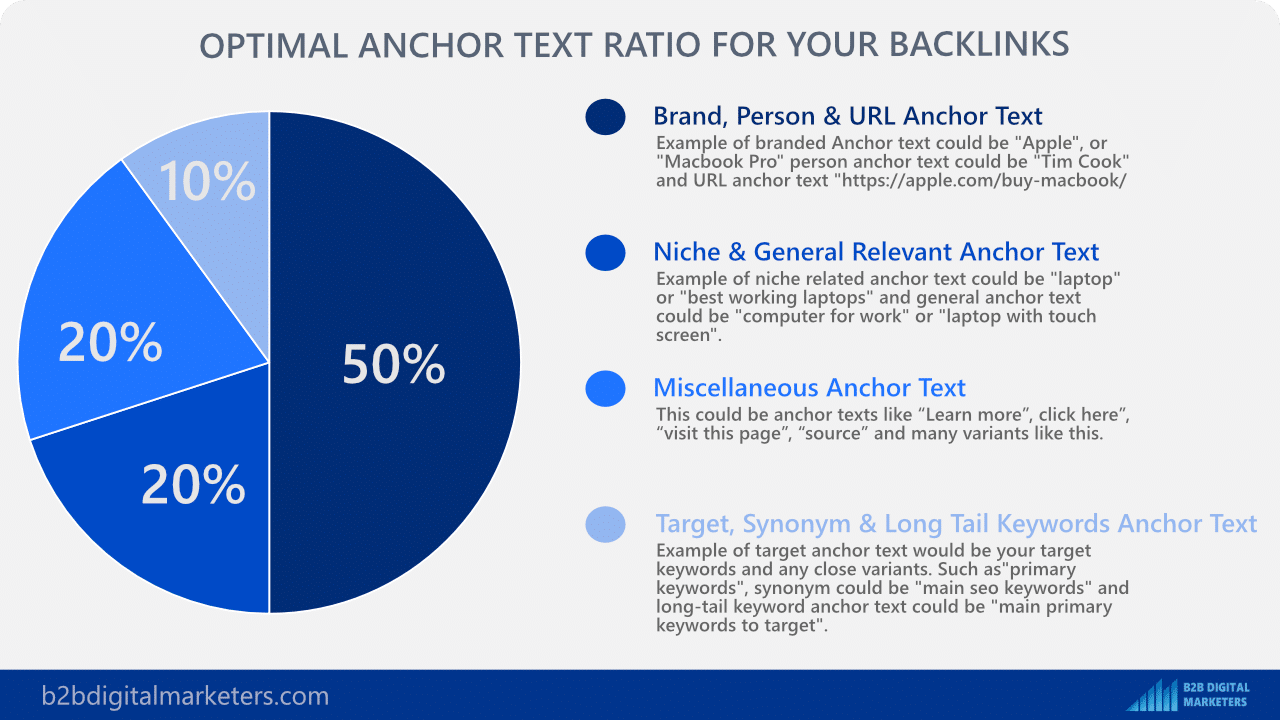
Factor #7: Backlink Profile of the Linking Site
Analyzing the overall backlink profile and linking patterns of a site can reveal a lot about quality.
So, here are the things you should look out for when doing a backlink audit:
Link Ratio
A healthy backlink profile has a balanced ratio of external links out versus backlinks in, Anything below 0.2 is ideal. Too many outbound links and not enough earned backlinks indicate low authority and not much link juice left to be passed over.
Link Industries
Review where a site links out to. Sites linking to questionable industries like gambling, adult content, pharmaceuticals, CBD, or even Crypto Currency may get your website penalized or devaluated.
Link Relevancy
Scan a sample of domains a site links to. Lots of links to unrelated niche sites may be suspicious. Relevant, high-quality sites are better. If they link to a lot of unrelated websites it simply means their main income is selling backlinks and you want to avoid these.
Backlink Audits
Do overall backlink audits on linking domains to spot unhealthy profiles. Avoid sites with unnaturally rapid link growth, toxic backlinks, or other shady profiles.
Factor #8: Avoid Sites that Publicly Accept Guest Posts
The last factor that I want to mention to determine the quality of backlinks is to avoid sites that publicly display that they accept guest posts.
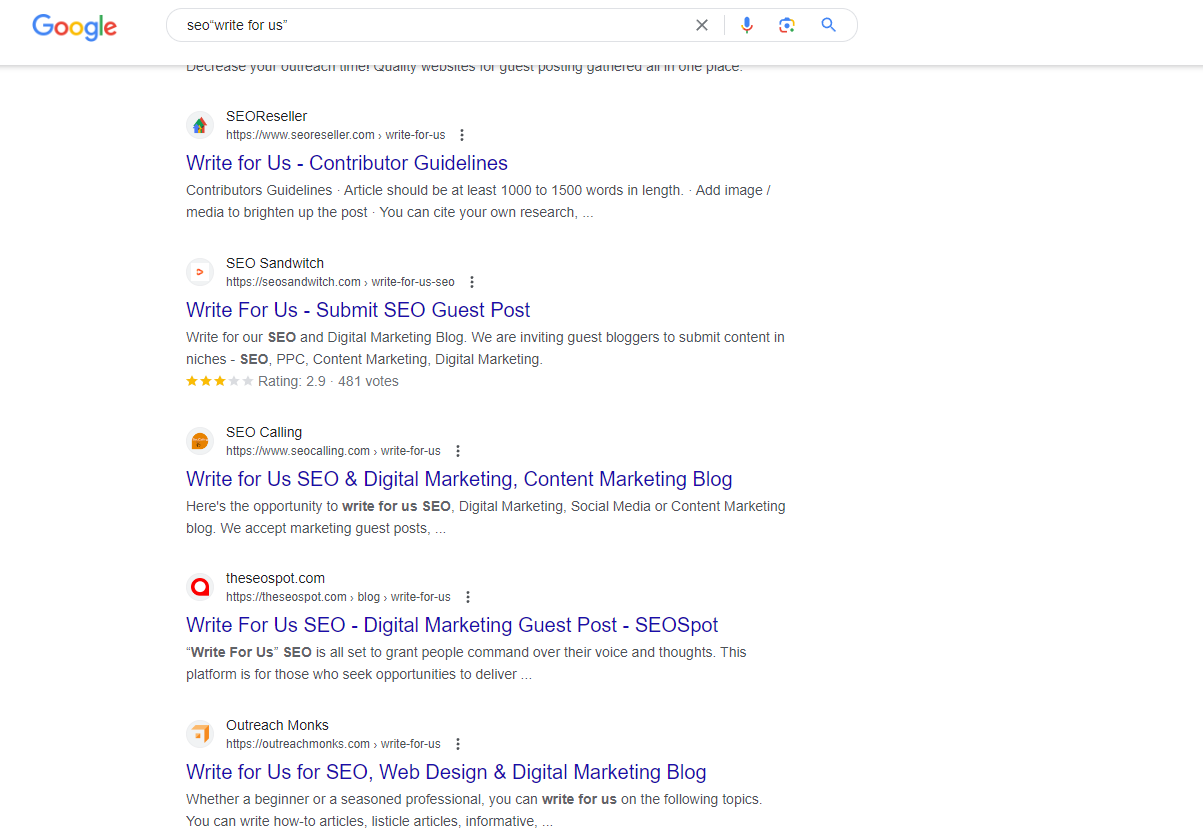
The reason for that is that you want to ensure that your guest post is not obvious otherwise Google algorithm will devaluate your backlink and you just wasted time, money, and effort on it.
To learn more I recommend you to check out my guide on guest posting.
SEO Tools to Check Backlink Quality
- SE Ranking: SE Ranking offers robust backlink analysis and tracking. You can analyze links by type, get anchor text ratios, assess authority scores, and more. Useful for ongoing link audits.
- SEMRush: SEMRush generates backlink reports allowing you to evaluate link metrics like authority, relevancy, anchor text, and domain quality for your entire profile. The tool provides a useful “Backlink Audit” report to identify potentially toxic links.
- Mangools: Mangools LinkMiner gives you ways to organize links by quality factors like dofollow/nofollow, contextual relevance, etc. You can also analyze competitor domains for comparison.
- Ahrefs: Ahrefs provides one of the largest link databases. It can show if links are followed/nofollowed, analyze anchor text usage, and assess domain-level authority scores of linking sites.
Best Link Building Strategies for High-Quality Backlinks
With that here are some of my preferred link building strategies that work currently very well:
- (HARO) Connectively Link Building – Pitch expert sources for relevant high authority sites through HELP A REPORTER OUT.
- Podcast Link Building – Reach out to podcasters in your niche to be interviewed and get backlinks from show notes.
- Resource Link Building – Create resources like guides, tools, or studies and build links by promoting them.
- Guest Posting – Write and publish guest posts on authority sites that accept high-quality content.
- Link Insertion – Explore options for naturally mentioning and linking to your content while guest posting.
- Link Exchange – Two-way or three-way link exchanges can work only with highly relevant sites, use sparingly.
- Press Release SEO – Effective for building mass media and news links if announcements are newsworthy.
Dealing with Low-Quality Backlinks
If your backlink analysis uncovers toxic, spammy, or irrelevant links, here are some ways to address these low-quality links:
- Do Nothing – In 99.9% you should do absolutely nothing. This is because Google mostly ignores bad-quality links. This is to prevent any negative attacks as well as don’t let website owners harm their ranking.
- Disavow Tool – In some very rare cases you can use Google’s Disavow Tool to inform them you do not want certain backlinks counted. Submit a list of domains/URLs. But I am talking about real-bad staff such as very bad adult websites, drugs, etc. Not a website with scraped content or a website with a list of domains.
- Email Site Owners – In the least possible scenario, you can reach out politely asking sites to remove harmful links if possible. This does not work always, but you can do that too.
When it comes to dealing with low-quality backlinks Google does most of the work. They have so much data so they can easily disavow bad quality backlinks on their own.
So as John Mueller said:
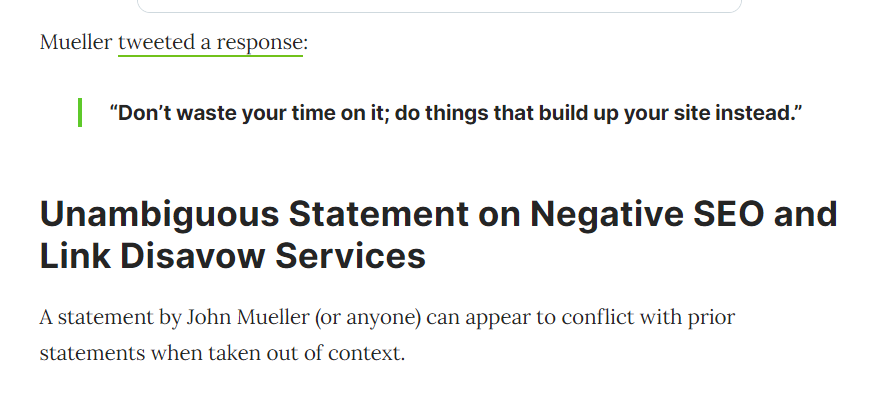
Backlink Quality vs Quantity?
When it comes to backlinks, quality trumps quantity. It’s a common myth that the only link building metric that matters is the total number of backlinks. However, this isn’t an accurate view of how search engines assess links.
As Google’s John Mueller explains, Google doesn’t simply count the number of links or unique referring domains pointing to a site. The quality and relevance of those links are much more important factors.
The key points to remember are:
- Don’t obsess over the total backlink count alone. 100 excellent links can mean more than 100,000 poor links.
- “Quality vs quantity” is misleading. “Quality vs low-quality” is the right mindset. Some quantity of links is expected.
- In competitive industries, having a higher volume of high-quality backlinks is essential. But start small if needed.
- Focus on earning links naturally from relevant sites, not on spam outreach for maximum numbers.
- A few solid, authoritative links from trusted sources outweigh a large network of manipulative links.
Prioritize quality over all else, then work on progressively increasing your site’s domain authority through relevant links over time.
Don’t waste your time and effort on low-value or irrelevant links just for the sake of quantity.
Follow the 8 factors I provided and you will be well on your way of dominating the search!
Final Advice (Conclusion)
Gaining high-quality, authoritative backlinks remains one of the most important goals in SEO especially with AI writing tools making it easy to produce large amounts of content.
But be selective about which links you build and monitor your backlink profile regularly. Focus on earning and building backlinks naturally from relevant sites rather than spam outreach.
Check for context, optimization, and relevance using the factors discussed. In the worst-case scenario, leverage tools to identify unhealthy links for disavowal and removal.
With a solid link building foundation that prioritizes quality, your content and keywords can gain visibility and organic search traffic over time.
Support the B2BDigitalMarketers
Hey, Eduard here.
As a solo blogger with limited resources, I need your support to keep creating in-depth content like this. Please consider joining my Patreon community to help this site grow.
Your pledge – no matter how small – will enable me to dedicate more time to sharing actionable tips and strategies. With your help, I can take this project to the next level and really make a difference for other SEOs and marketers.
I would sincerely appreciate you joining me on this journey as a founding patron. Together, we can build an amazing resource hub. Hope to see you on the inside – thanks for your trust and support!
FAQs about Backlink Quality
Let’s answer some of the commonly asked questions about backlink quality:
Backlink quality matters more than quantity in SEO. While having numerous backlinks can seem beneficial, search engines prioritize links from reputable, relevant sites. A few high-quality backlinks can have a more positive impact on rankings than many low-quality ones. Accumulating low-quality backlinks can harm your site’s credibility and even lead to penalties from search engines. Prioritize quality over quantity for long-term SEO success.
Yes, backlink quality is crucial for SEO. High-quality, relevant backlinks from authoritative sites signal to search engines that your content is valuable and trustworthy, positively impacting rankings. Low-quality or spammy links can hurt your site’s credibility and potentially lead to penalties. Always prioritize quality over quantity when building backlinks.
A bad quality backlink originates from unrelated, low-authority, or spammy websites. Such links can be a result of buying links, participating in link schemes, or using automated software. These backlinks can harm your site’s SEO, decrease its trustworthiness, and potentially lead to search engine penalties. It’s essential to monitor and disavow harmful links.
High-quality backlinks are vital in SEO because they signal to search engines that your site is credible and authoritative. Obtaining links from reputable, relevant sites can boost your website’s ranking in search results. These backlinks act as endorsements, increasing your site’s trustworthiness and domain authority, thereby positively impacting search visibility and organic traffic.
To determine if a backlink is good, consider these factors:
- Source’s Relevance: The linking site should be relevant to your content.
- Domain Authority: High-authority sites often provide more valuable backlinks.
- Follow vs. No-Follow: “Follow” links pass SEO value; “No-Follow” links generally don’t.
- Natural Anchor Text: Avoid over-optimized, keyword-stuffed anchor text.
- Diverse Link Profile: Ensure various sites link to you, not just one.
- Avoid Spammy Sites: Check the linking site’s credibility; avoid links from spam or low-quality sites.
Yes, you should disavow bad quality backlinks. Disavowing signals search engines to ignore these links, protecting your site from potential penalties. If you identify toxic or spammy backlinks pointing to your website, it’s advisable to remove them or use Google’s Disavow Tool. Always be cautious and double-check before disavowing to avoid excluding beneficial links.
Yes, you can buy quality backlinks by selecting trustworthy and reputable link building agencies such as uSERP.io, Authority.Builders, or LinkBuilders.io. However, ensure the links are contextually relevant and appear natural. Remember, buying links in bulk or from low-quality sources can still result in penalties. Always prioritize quality over quantity.
Related Articles:
- 11 Best Ways to Get Gov Backlinks for Your Website that Actually Works
- Best 10 Strategies to Get Edu Backlinks for Your Website
- Primary Keywords: The Guide to Target Main Keywords in SEO
- How to Add Keywords in WordPress? [Guide for Beginners]
Also, check out our SEO hub page to find all our SEO resources.
Disclaimer
This article was written by Eduard Dziak and may contain affiliate links. The following tools were used to optimize the article for the best user and search engine experience:
- SE Ranking for keyword research and on-page SEO optimization
- Surfer SEO for SEO-friendly content creation for users and search engines.
- Jasper AI for grammar correction and information enhancement.
The article is based on the author’s own experience and knowledge, drawn from both his own work and that of his clients, to provide the latest, proven methods.








